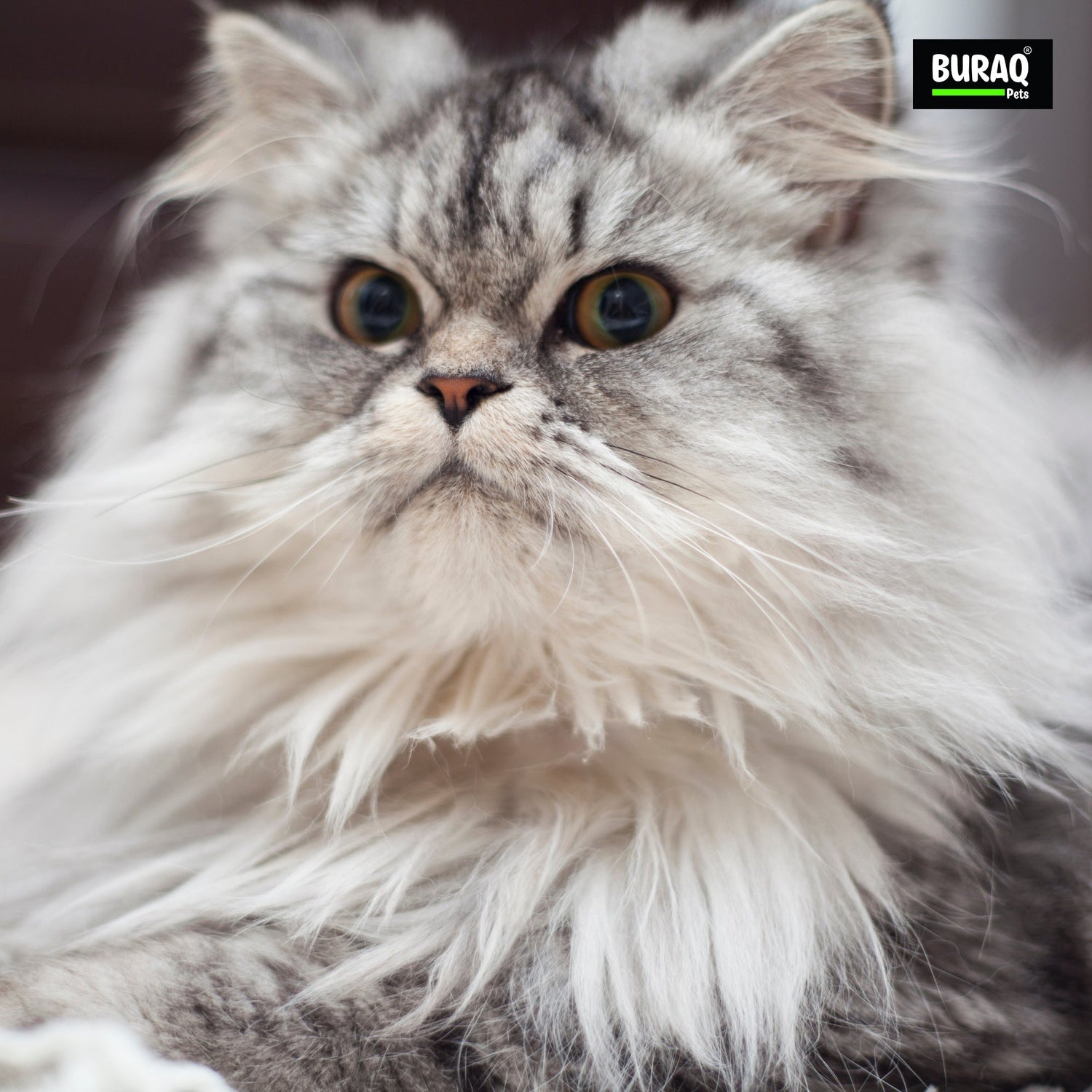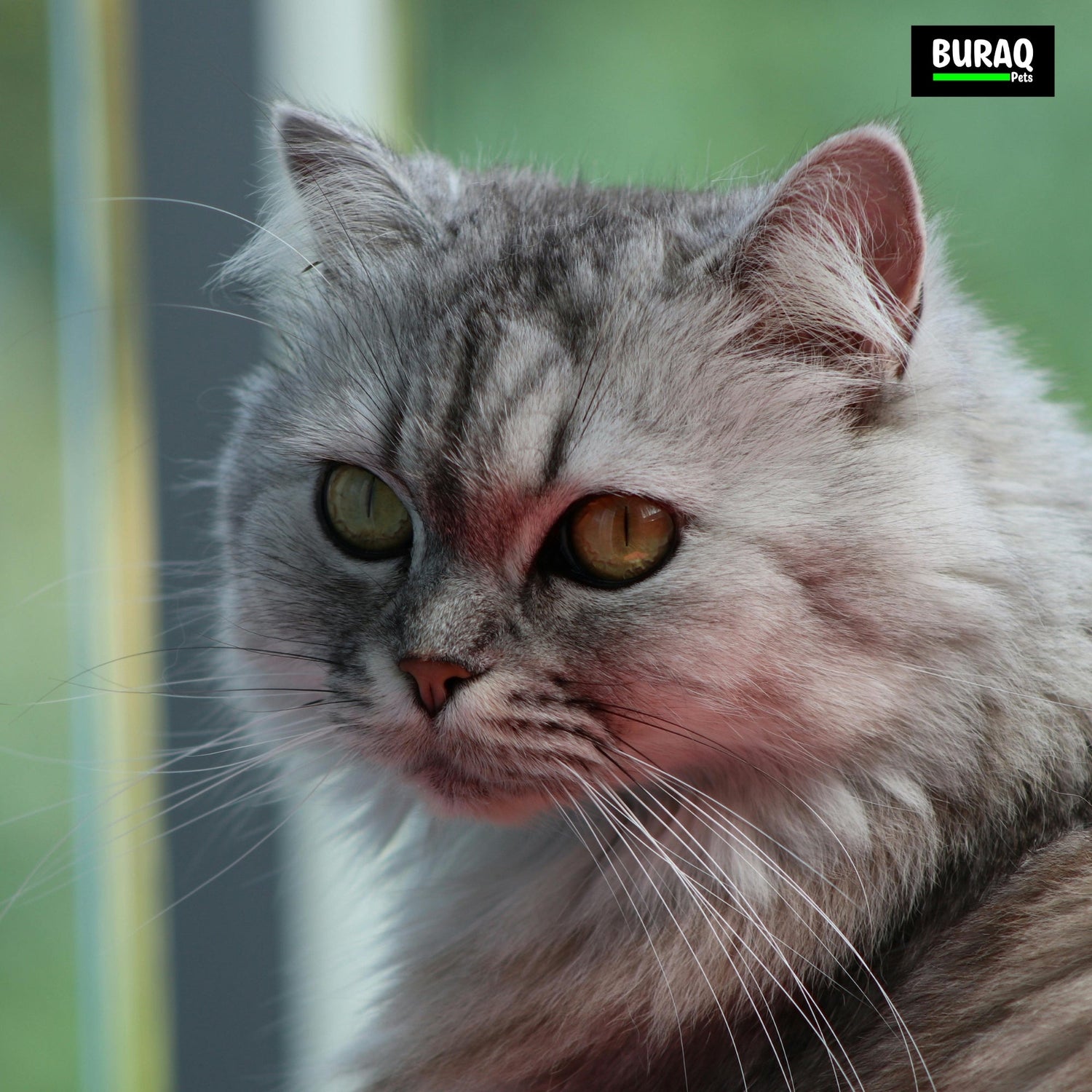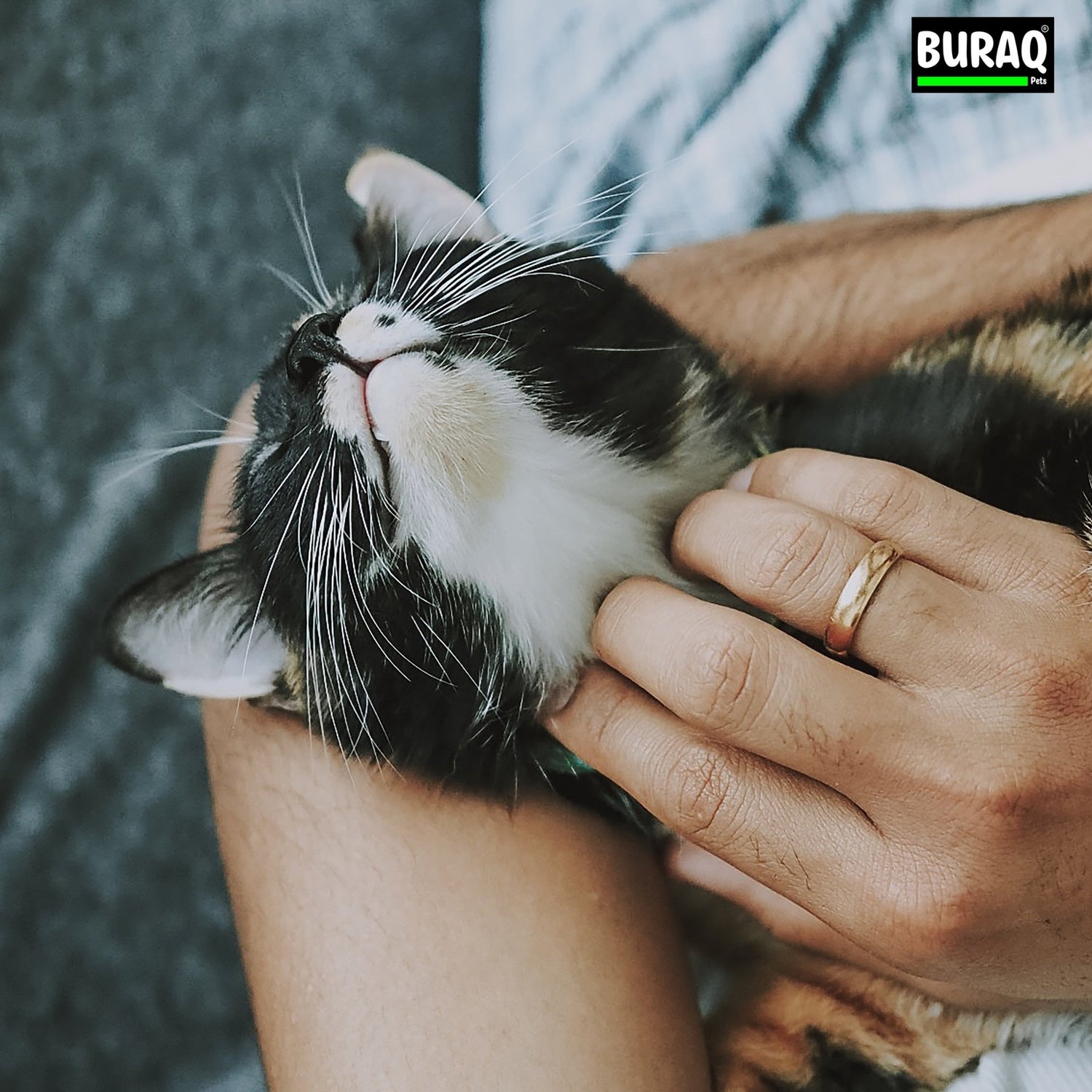As a cat parent, you’ve likely witnessed your feline friend spending hours meticulously grooming themselves. While cats are naturally clean animals, they still benefit tremendously from regular grooming assistance. Regular cat grooming at home can significantly reduce hairballs and shedding while allowing you to monitor your pet’s overall health. This comprehensive guide will walk you through everything you need to know about keeping your cat well-groomed, comfortable, and healthy—right from the comfort of your home.
Why Does Cat Grooming at Home Matters ?
Cats typically spend up to 50% of their waking hours grooming themselves, but they still need our help. With the right tools, cat grooming at home becomes a bonding experience rather than a struggle. Beyond the obvious aesthetic benefits, regular grooming sessions allow you to check for skin issues, parasites, or unusual lumps that might otherwise go unnoticed.
For Indian pet parents, home grooming is particularly valuable considering our climate conditions. Seasonal shedding can be intense during warmer months, and humidity can contribute to skin issues if coats aren’t properly maintained. Many pet parents find that cat grooming at home saves money and reduces stress for their feline friends compared to professional grooming services.
Essential Grooming Tools for Cats You Should Own
Before diving into the grooming process, gathering the right equipment is crucial. Different coat types require specific grooming tools for cats to prevent matting and tangles. Here’s what you’ll need in your grooming arsenal:
Brushes and Combs
The foundation of any cat grooming routine starts with the right brushes:
- Slicker Brush: Perfect for removing loose fur and preventing mats, especially for medium to long-haired cats. The Buraq Pets Self-Cleaning Slicker Brush features a one-click cleaning mechanism that makes fur removal effortless.
- Metal Comb: Essential for detangling and removing loose fur. Look for combs with rounded teeth to prevent skin irritation.
- Rubber Brush or Grooming Mitt: Ideal for short-haired cats and for cats who are sensitive to traditional brushes. These also help remove loose fur while massaging the skin.
- Deshedding Tool: Particularly useful during shedding seasons to remove the undercoat without damaging the topcoat.
Nail Care Tools
- Cat-Specific Nail Clippers: These are designed to make trimming safer and more precise than human nail clippers.
- Nail File: For smoothing rough edges after trimming.
Additional Essential Supplies
- Cat-Safe Wipes: For cleaning around the eyes, ears, and for quick touch-ups between baths.
- Ear Cleaning Solution: Specially formulated for cats to safely remove wax and debris.
- Cat Toothbrush and Toothpaste: Human toothpaste contains ingredients toxic to cats, so always use cat-specific dental products.
- Cat Shampoo: For occasional bathing, choose a mild, cat-specific formula.
Having the right cat grooming supplies on hand makes regular maintenance much easier and more effective. Quality cat grooming supplies are an investment in your pet’s long-term health and comfort.
Complete Guide to Cat Grooming at Home: Step-by-Step Routine
Learning how to groom a cat properly takes patience and the right techniques. Here’s a comprehensive routine to follow:
1. Brushing
Brushing is the cornerstone of cat grooming and should be done regularly to keep your cat’s coat healthy, reduce shedding, and prevent hairballs.
🧴 For short-haired cats: Brush 1–2 times per week
🧼 For long-haired cats: Brush daily or every other day
Technique:
- Begin when your cat is calm—after a play session or a meal is ideal.
- Use gentle strokes in the direction of hair growth.
- Work methodically from head to tail, paying extra attention to areas like the chest, belly, and behind the ears, where mats are common.
💡 To make brushing easy and effective, try the Buraq Grooming Self-Cleaning Slicker Brush. This ergonomic brush effortlessly removes loose undercoat and tangles while giving your cat a soothing massage. Its self-cleaning button means fur removal takes just one click—perfect for busy cat parents.
🪮 For long-haired cats, use the slicker brush first to remove loose hair and prevent mats, then follow up with a metal comb to catch any remaining tangles.
🔧 Pro Tip: If you come across a mat, avoid pulling or cutting it with scissors, as this can injure your cat’s delicate skin. Instead, use a detangling spray and gently work through it with your fingers or a mat splitter.
2. Nail Trimming
When learning how to groom a cat, nail trimming can be one of the most intimidating steps for new pet parents. But with the right tools and a bit of practice, it becomes a simple part of your routine.
🕰️ Start when your cat is calm—after a nap or mealtime works well.
🐾 Gently press on the paw pad to extend the nail.
🔍 Locate the "quick" (the pink area inside the nail that contains blood vessels) and trim only the sharp, clear tip beyond it.
✂️ Trim a small amount at a time using sharp, safe, cat-specific clippers. A great option is the Buraq Pets Professional Lockable Nail Cutter—designed with a built-in safety guard, ergonomic grip, and bonus nail file to make trimming precise and stress-free for both you and your pet.
🍖 Reward your cat with a treat or gentle petting after each paw to create a positive association.
📅 Frequency: Every 2–3 weeks depending on your cat’s activity level and scratching behavior.
3. Ear Cleaning
Clean ears are essential for preventing infections:
1. Check your cat’s ears weekly for redness, discharge, or unusual odor.
2. For cleaning, moisten a cotton ball (never a cotton swab) with a cat-specific ear cleaner.
3. Gently wipe the visible part of the inner ear, never pushing into the ear canal.
4. Allow your cat to shake their head after cleaning to help dislodge deeper debris.
4. Eye Care
Keeping the eye area clean prevents staining and irritation:
1. Use a soft, damp cloth or cat-safe eye wipe to gently clean around the eyes.
2. Always use a separate section of the cloth for each eye to prevent cross-contamination.
3. If you notice excessive tearing, redness, or discharge, consult your veterinarian.
5. Dental Care
Dental health is often overlooked but crucial for overall wellbeing:
1. Introduce toothbrushing gradually, starting by letting your cat taste the toothpaste.
2. Use a cat-specific toothbrush or finger brush with cat-safe toothpaste.
3. Focus on the outer surfaces of the teeth where plaque accumulates.
4. Aim for daily brushing, but even a few times a week will help.
6. Bathing (When Necessary)
Most cats rarely need baths, but they may be necessary in certain situations:
1. Prepare everything before bringing your cat to the bathing area.
2. Use lukewarm water and cat-specific shampoo.
3. Wet your cat from the neck down, avoiding the head.
4. Apply shampoo gently and rinse thoroughly—residue can irritate the skin.
5. Wrap your cat in a towel immediately after and keep them in a warm room until completely dry.
Frequency: Only when necessary—if your cat gets into something sticky or smelly, or if recommended by your veterinarian for skin conditions.
Effective Cat Grooming Tips to Reduce Anxiety
One of the most valuable cat grooming tips is to start the process when your cat is calm and relaxed. Cats are sensitive creatures, and grooming can be stressful if not approached correctly. Here’s how to make it a more pleasant experience:
Creating a Positive Environment
1. Choose the right location: Select a quiet, familiar space with good lighting and a non-slip surface.
2. Timing matters: Schedule grooming when your cat is naturally relaxed, such as after a meal or playtime.
3. Start young: If possible, introduce grooming routines when your cat is still a kitten to normalize the experience.
4. Use positive reinforcement: Offer treats, praise, and petting during and after grooming sessions.
Gentle Cat Grooming Techniques for Anxious Cats
Gentle cat grooming techniques help build trust and make the process less stressful for both of you:
1. Begin with short sessions: Start with just 2-3 minutes and gradually increase as your cat becomes more comfortable.
2. Use gentle restraint: If necessary, try the “burrito” technique with a towel for anxious cats, leaving only the area being groomed exposed.
3. Watch for stress signals: Dilated pupils, flattened ears, tail twitching, or growling indicate your cat needs a break.
4. Stay calm yourself: Cats pick up on your energy, so maintain a calm, soothing demeanor throughout the process.
5. Consider calming aids: Pheromone diffusers or sprays can help create a more relaxing atmosphere for particularly anxious cats.
Professional cat grooming tips suggest brushing before bathing to remove loose fur and tangles, which makes the entire process smoother and less stressful for your cat.
Health Benefits of Regular Grooming
Regular grooming does more than just keep your cat looking good—it’s a fundamental aspect of preventative healthcare:
Physical Benefits
1. Reduced hairballs: Regular brushing removes loose fur before your cat can ingest it during self-grooming, reducing hairball formation and associated digestive issues.
2. Healthier skin and coat: Brushing distributes natural oils throughout the coat, promoting shine and preventing dry skin. It also increases blood circulation to the skin.
3. Early detection of health issues: Regular handling allows you to notice lumps, bumps, parasites, or skin conditions early when they’re typically easier to treat.
4. Decreased shedding: While you can’t eliminate shedding entirely, regular grooming significantly reduces the amount of fur around your home.
5. Parasite prevention: Regular grooming helps you spot fleas, ticks, or other parasites before they become a serious problem.
Emotional Benefits
1. Strengthened bond: Positive grooming experiences create trust and reinforce your relationship with your cat.
2. Reduced stress: Many cats find gentle brushing soothing once they’re accustomed to it.
3. Increased socialization: Regular handling makes cats more comfortable with being touched, which is beneficial for veterinary visits and interactions with others.
Breed-Specific Cat Grooming Techniques
Different coat types require specific cat grooming techniques for optimal results. Understanding your cat’s specific needs based on their coat type is essential:
Short-Haired Cats (Domestic Shorthair, Siamese, Bengal)
- Brushing needs: Once weekly with a rubber brush or grooming mitt, followed by a fine-toothed comb
- Shedding management: Increases during seasonal changes; increase brushing frequency during these periods
- Special considerations: Though they require less maintenance, regular grooming still helps reduce shedding and hairballs
Medium to Long-Haired Cats (Persian, Maine Coon, Ragdoll)
- Brushing needs: Daily brushing with a slicker brush and metal comb to prevent painful mats
- Problem areas: Pay special attention to the “armpit” areas, behind the ears, and under the collar where mats commonly form
- Bathing frequency: May need occasional baths to keep their coat clean and reduce oil buildup
Special Cases
- Hairless cats (Sphynx): Require weekly baths to remove oil buildup on the skin
- Double-coated breeds (Siberian, Norwegian Forest Cat): Need extra attention during seasonal shedding with specialized deshedding tools
- Seniors: Often need more assistance as they may have difficulty reaching all areas during self-grooming
Recommended Grooming Products from Buraq Pets
The basic cat grooming supplies every pet parent needs include brushes, nail trimmers, and ear cleaners. Buraq Pets offers a range of high-quality grooming tools designed specifically for Indian conditions and cat breeds commonly found in India:
Brushes and Combs
- Buraq Pets Self-Cleaning Slicker Brush: For medium to long-haired cats, daily brushing is a must to prevent mats and reduce shedding. The Buraq Pets Self-Cleaning Slicker Brush makes this easier with its ergonomic grip and one-click fur release mechanism. It glides through the coat to remove loose fur and undercoat without pulling, and with a single press, the brush is clean and ready for the next session—saving you time and effort.
- Buraq Pets Dual-Density Grooming Comb: For long-haired cats use a slicker brush first to remove loose hair and prevent mats, then follow up with a high-quality metal comb. The Buraq Pets Dual-Density Grooming Comb is an excellent choice—it features both wide and narrow stainless-steel teeth, making it ideal for everything from tackling tangles to giving your cat a polished, finished look. Its durable wooden handle offers a comfortable grip and adds a premium feel to your grooming routine.
- Buraq Pets Grooming Glove: For cats who are sensitive to traditional brushes, grooming can often feel stressful. That’s where the Buraq Pets Grooming Glove comes in. This single-sided glove transforms gentle petting into an effective grooming session—removing loose hair while providing a calming, massage-like experience. It’s perfect for short-haired cats or those who get anxious around regular grooming tools.
Specialized Tools
- Buraq Pets Gentle Nail Clipper: Designed specifically for cats with a safety guard to prevent over-cutting.
- Buraq Pets 5-in-1 Pet Shampoo: A gentle, neem-based formula that cleans effectively while being kind to sensitive skin.
- Buraq Pets Anti-Tick Dry Bath: Perfect for cats who hate water, this powder formula helps clean and protect without the stress of a traditional bath.
Quality cat grooming supplies are an investment in your pet’s long-term health and comfort. With the right tools, regular maintenance becomes simpler and more effective for both you and your feline friend.
Conclusion: Making Cat Grooming a Positive Routine
Establishing a regular grooming routine is one of the most loving things you can do for your cat. Not only does it keep them looking their best, but it also contributes significantly to their overall health and wellbeing. Remember that patience is key—some cats may take time to adjust to grooming, but with consistency and positive reinforcement, most cats learn to tolerate or even enjoy these sessions.
Start with short, positive experiences and gradually build up to a complete grooming routine. Pay attention to your cat’s preferences and body language, adjusting your approach accordingly. With time, grooming can become a special bonding opportunity rather than a stressful chore.
For all your cat grooming needs, Buraq Pets offers specially formulated products designed with Indian cats and conditions in mind. Visit www.buraqpets.com to explore our complete range of grooming tools and supplies that make home grooming easier and more effective. Your feline friend deserves the best care possible—right in the comfort of your home.






